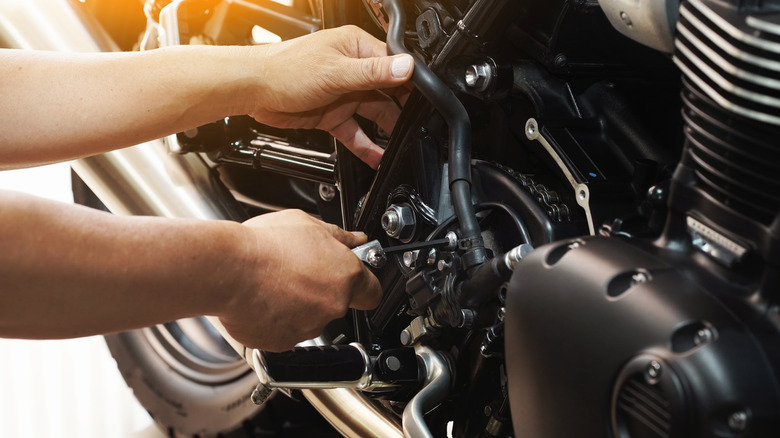
Signs of a Well-Maintained Used Motorcycle
Buying a motorcycle can be exciting, but if you’re considering a pre-owned model, knowing how to spot a well-maintained bike is essential. A motorcycle’s condition affects not only its performance but also your safety and long-term ownership costs. The good news is that there are clear signs to look for when evaluating used motorcycles, from cosmetic details to mechanical components.
This guide walks you through the key indicators of proper care so you can make a confident decision before making a purchase.
Why Motorcycle Maintenance History Matters
A motorcycle’s maintenance history provides valuable insight into how well the previous owner cared for it. A bike that has been regularly serviced tends to perform better, last longer, and require fewer unexpected repairs. On the other hand, neglecting essential upkeep can lead to costly mechanical issues down the road.
Before you decide on a bike, ask for service records, receipts, or a maintenance log. A detailed history showing regular oil changes, brake inspections, tire replacements, and chain adjustments is a strong sign the motorcycle was properly maintained.
Visual Inspection: First Impressions Matter
The first step in evaluating a pre-owned motorcycle is taking a close look at its overall appearance. While cosmetics aren’t everything, a bike’s exterior can reveal a lot about how it’s been cared for.
Check the Paint and Bodywork
Look for consistent paint quality across the tank, fairings, and frame. Large scratches, mismatched paint, or dents may indicate previous accidents or neglect. A well-kept bike typically shows minimal wear and no obvious damage.
Inspect for Rust or Corrosion
Check areas like the exhaust, frame joints, and wheel spokes for rust. While minor surface corrosion can be cleaned, deeper rust on the frame or swingarm may suggest poor storage conditions.
Examine the Seat and Handlebars
Faded seats, cracked grips, or worn handlebar controls can signal heavy use or exposure to the elements. These aren’t necessarily deal-breakers, but combined with other signs of wear, they might indicate inconsistent maintenance.
Tires and Wheels: Signs of Safe Riding
Tires are one of the most important components when assessing a used motorcycle. Not only do they affect safety, but they also offer clues about riding habits and care.
- Tread Depth: Use a tread gauge or visually inspect for adequate depth. Shallow tread may mean replacement is needed soon.
- Even Wear Patterns: Uneven wear can indicate alignment issues, poor suspension maintenance, or aggressive cornering.
- Tire Age: Check the DOT date code on the tire’s sidewall. Even if tread looks fine, tires older than five years may need replacement due to dry rot.
- Wheel Condition: Inspect rims for cracks, dents, or signs of impact damage. A bent wheel could be costly to replace and may hint at previous accidents.
Engine and Fluids: The Heart of the Motorcycle
The engine is where long-term maintenance really shows. A quick inspection and test run can tell you a lot about the bike’s mechanical health.
Check for Leaks
Look around the engine, oil pan, and coolant system for signs of leaks. Even small drips could signal larger problems if not addressed.
Inspect Oil and Other Fluids
Ask to see the oil dipstick or check the sight glass if the bike has one. Clean, amber-colored oil usually means regular changes. Thick, dark, or gritty oil may suggest overdue maintenance. The same applies to brake fluid, coolant, and transmission fluid — clear fluids typically indicate consistent upkeep.
Listen to the Engine
When the bike starts, listen for knocking, rattling, or irregular idle patterns. A smooth, steady sound is what you want to hear. Excessive smoke from the exhaust, especially blue or black smoke, can indicate oil burning or fuel system problems.
Brake System: Safety First
Motorcycle brakes are critical to both performance and rider safety. During your inspection, pay close attention to the brake components:
- Brake Pads and Rotors: Check pad thickness and look for smooth, even wear on the rotors.
- Brake Lines: Rubber hoses should be free from cracks or bulges.
- Brake Fluid: Clear fluid is a positive sign. Dark or cloudy brake fluid often points to skipped maintenance intervals.
If possible, take the bike for a short ride to test brake responsiveness. A firm, controlled feel without excessive squealing or vibration usually indicates a well-maintained system.
Chain, Belt, and Sprockets: Drivetrain Health
The drivetrain takes a lot of stress, especially on high-mileage motorcycles, making it another area to evaluate carefully.
- Chain Tension: A properly adjusted chain should have a small amount of slack but not feel overly loose or tight.
- Lubrication: A well-maintained chain will appear lightly oiled rather than dry or caked with dirt.
- Sprocket Teeth: Worn or hooked teeth can indicate a neglected drivetrain and suggest replacements may be needed soon.
- Drive Belt Condition: If the motorcycle uses a belt, check for cracks, fraying, or glazing.
Consistent chain or belt maintenance is one of the easiest ways to spot an owner who takes care of their bike.
Electrical Components: Testing the Systems
Motorcycles rely on a range of electrical components for smooth operation. During your inspection, turn the ignition on and test the following:
- Headlights and Taillights
- Turn Signals
- Horn
- Digital Displays or Gauges
Dim lights or flickering indicators could signal battery issues, loose wiring, or problems with the charging system.
Suspension and Steering: Handling and Stability
The suspension system plays a critical role in ride quality and handling. A quick test can reveal a lot about its condition:
- Front Forks: Check for oil leaks around the fork seals and make sure compression feels smooth.
- Rear Shock: Look for visible damage and test responsiveness when sitting on the bike.
- Steering Head Bearings: Turn the handlebars side to side slowly. Any grinding, clicking, or resistance could point to worn bearings or alignment issues.
A well-maintained suspension system ensures safer, more comfortable riding and less wear on other components.
Mileage vs. Maintenance: What Matters More
It’s tempting to assume lower mileage always equals a better deal, but that’s not necessarily true. A higher-mileage bike that’s been consistently serviced can often be more reliable than a low-mileage motorcycle that’s been neglected.
When evaluating used motorcycles, balance mileage with the bike’s maintenance history, storage conditions, and overall care. Ask where and how the motorcycle was ridden — frequent long rides are usually less stressful on the engine than short, stop-and-go commutes.
Red Flags to Watch Out For
While minor imperfections are expected on pre-owned bikes, certain warning signs may indicate potential problems:
- Missing or incomplete maintenance records
- Heavy rust or corrosion in multiple areas
- Unexplained dents, scratches, or frame damage
- Loud knocking or grinding noises from the engine
- Electrical issues, such as unresponsive lights or gauges
- Hesitation or stalling during a test ride
If you notice several of these red flags, it may be worth moving on to a different option.
Tips for Buying with Confidence
To make sure you’re investing in the right motorcycle, follow these tips:
- Request a Professional Inspection: A mechanic can spot issues you might overlook.
- Ask for a Test Ride: Get a feel for handling, comfort, and performance.
- Compare Similar Models: Research prices to make sure you’re getting fair value.
- Verify VIN and Title: Confirm ownership details to avoid future registration issues.
- Negotiate Based on Condition: Use any necessary repairs or maintenance as leverage during price discussions.
Final Thoughts
Buying a pre-owned motorcycle can be a smart way to save money and still enjoy a quality ride, but knowing what to look for makes all the difference. By carefully inspecting visual details, mechanical systems, and maintenance history, you can confidently choose a bike that’s been well cared for.
When shopping for used motorcycles, patience and attention to detail pay off. The time you spend upfront evaluating condition and performance helps ensure a smoother, safer riding experience for years to come.




